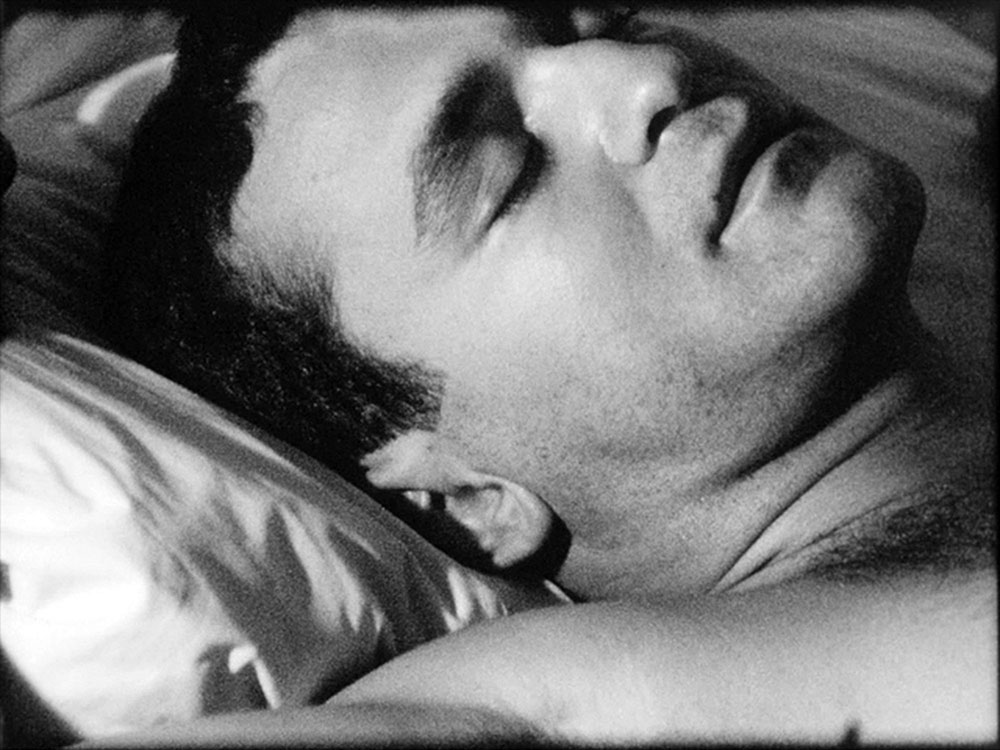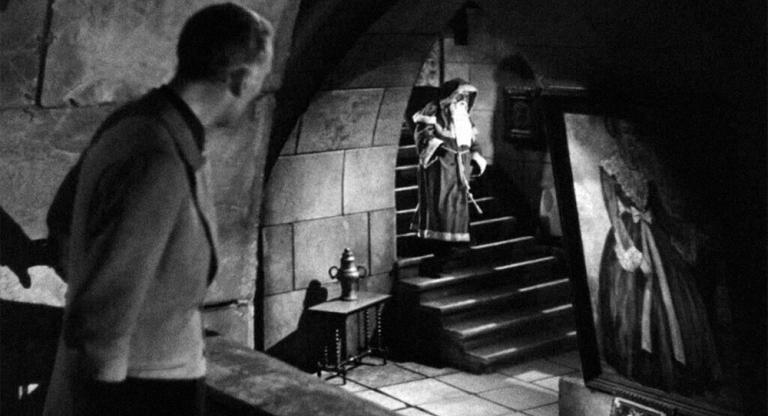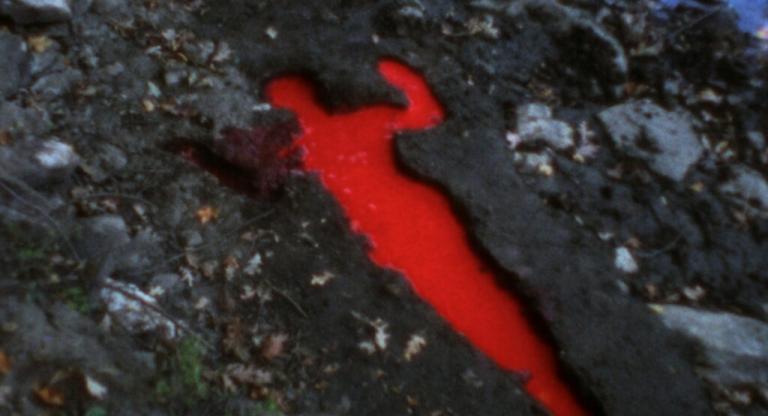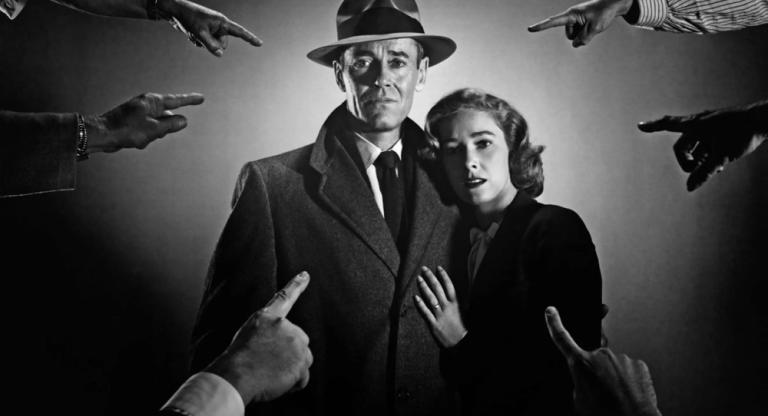Andy Warhol’s cinema might be considered an extension of his print-making practice insofar as difference is embedded into the piece through repetition. No Warhol piece is a whole in itself: it produces value via repetition and the minute differences achieved through that. Consider Warhol’s flowers currently on view at Dia Beacon—the flower, a cliché, is rendered as more than itself through its multiplicity.
Films for Warhol were mostly inspired by technical innovation: Sleep (1963) by Warhol’s acquisition of a 16mm Bolex camera, Empire (1964) by his acquisition of an Auricon, and Chelsea Girls (1966) by his proximity to The Velvet Underground and Nico, whose texture he hoped to capture with the film. The common line about Warhol is that the progression of his film work mirrors the historical progression of cinema itself, beginning at Sleep and ending with something almost resembling a “real” film, with Bad in 1977, which ironically Warhol had almost nothing to do with. Sleep mirrors, more than anything, pre-20th-century film, and its most like analogue might be Edison Kinetoscope Record of a Sneeze (1894), which over five seconds captures Edison’s assistant taking a pinch of snuff and sneezing it out. However, the trick of Sleep is that this is not one night of the poet John Giorno sleeping, but almost a summer’s worth of sleep edited together. Giorno would leave his apartment door open for Warhol to slip in at night and capture footage, which he intensely and rhythmically edited. The film begins on a closeup of Giorno’s torso, recalling the archaic torso of Apollo, and cuts to face, neck, and butt over the course of five and a half hours. Giorno is a light sleeper, his chest barely moving, his lips curled up in almost a smile. Every shot is a caress, every cut is the moment a lover might leave through the door you left open for them to return to.
In the summer of 1964, Warhol and his partner John Giorno went to see Jack Smith’s Normal Love and Flaming Creatures (both 1963) dozens of times. Through slow motion and fast cuts, Smith created an autonomous no-time, a heaven for the queer body to live forever in a moment of bliss—an erotics of the cut that Warhol was fascinated by. After his film Andy Warhol Films Jack Smith Filming "Normal Love” (1963), was confiscated by the police at a screening of Flaming Creatures, Warhol set out to make another film. Intrigued by Jonas Mekas’s cheap and on-the-fly production, he acquired the same camera Mekas used, an Auricon. The Auricon recorded sync sound right onto the film, used by journalists for greater ease in the field. Naturally, with such technology Warhol filmed Empire.
Warhol and Mekas, on the forty-fourth floor of the Time-Life Building, in Henry Romney’s office, film in darkness, only turning on the lights to change the reel. In so doing they bathe the field in a diffuse white glow, almost completely obliterating the Empire State Building in the center of the frame. As the white glow diffuses one can once or twice make out two bodies, one in the center of the screen and one situated off to the right, Brocken spectres reflecting off the glass over the city. For the first several hours of Empire night creeps up from the horizon, clouds passing by over the camera. A whirling beacon appears in the lower-left quadrant; the exterior floodlights of the Empire State Building itself slowly turn on. Office lights turn on and off. Then, all of a sudden, it is night. There are no stars out, no lights but the offices. Then, sometime in the early morning, the floodlights go out. It is complete night, and in some way we are free. Driven by the same nocturnal amphetamine-induced divagations as Sleep, here Warhol stays up past capital’s bedtime. That force, which in the film seems to erupt from the floodlights in an attempt to pierce the sky, has been defeated again by Warhol and Mekas.
Whereas Sleep and Empire consist of a radical temporal extension, thirty minutes into five hours in the former case, four hours into eight hours in the latter, Chelsea Girls bisects six hours of footage in half to form a three-hour film by two reels simultaneously. Some in black and white, some in color, all ostensibly set in the Chelsea Hotel, but also shot at the Factory or the Velvet Underground’s apartment. Vignettes play out, almost spilling across the screen: Brigid Berlin tears down Ingrid Superstar. Pope Ondine accepts and rejects a confession, Mary Woronov vacillates between insulting the girls seated around her and smiling, asking where she left her book. The superstars forget their lines, or stop acting, or cross some line that was never agreed upon in the first place: “You’re not supposed to talk to me that way.”
They’re all seated, but the camera can barely capture them. It zooms in for some micro-expression on Nico’s face, bathed in polka dots, and loses her. Pope Ondine, the pope of the dejected and cast off, disappears in the middle of a monologue, leaving the screen black. The only way to keep everyone inside the frame is to zoom in and out, to swivel around, hoping that they don’t melt away. Sometimes the pans and rotations sync up across the black dividing line: the camera pans left from Woronov and zooms in on Mario Montez, who has just walked in on two sleek, hairless, underwear-clad boys in her bed. Marie Mencken looks across the divide, across the hall, the black line dividing the two projected images, to look at one of the boys, who appears to have just gravely insulted Montez. It’s impossible to sync the reels up, so one vignette will end while the other continues on; a forever film. However, none of the Chelsea Girls ever go to sleep. John Giorno falls asleep, the Empire State Building is put to bed, but in the Chelsea Hotel to go to sleep might mean missing it all.
“Warhol’s Durational Cinema” runs through August 7 at Anthology Film Archives, with Sleep and Empire screening on 16mm.



